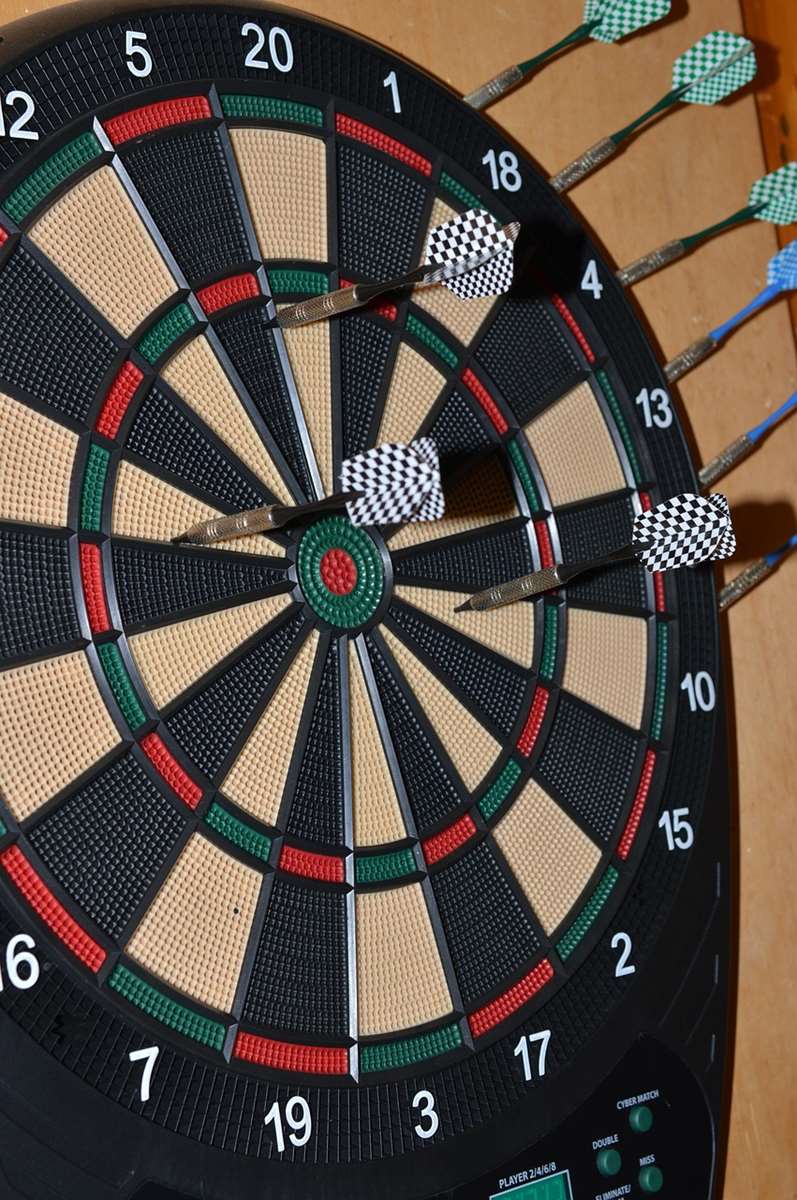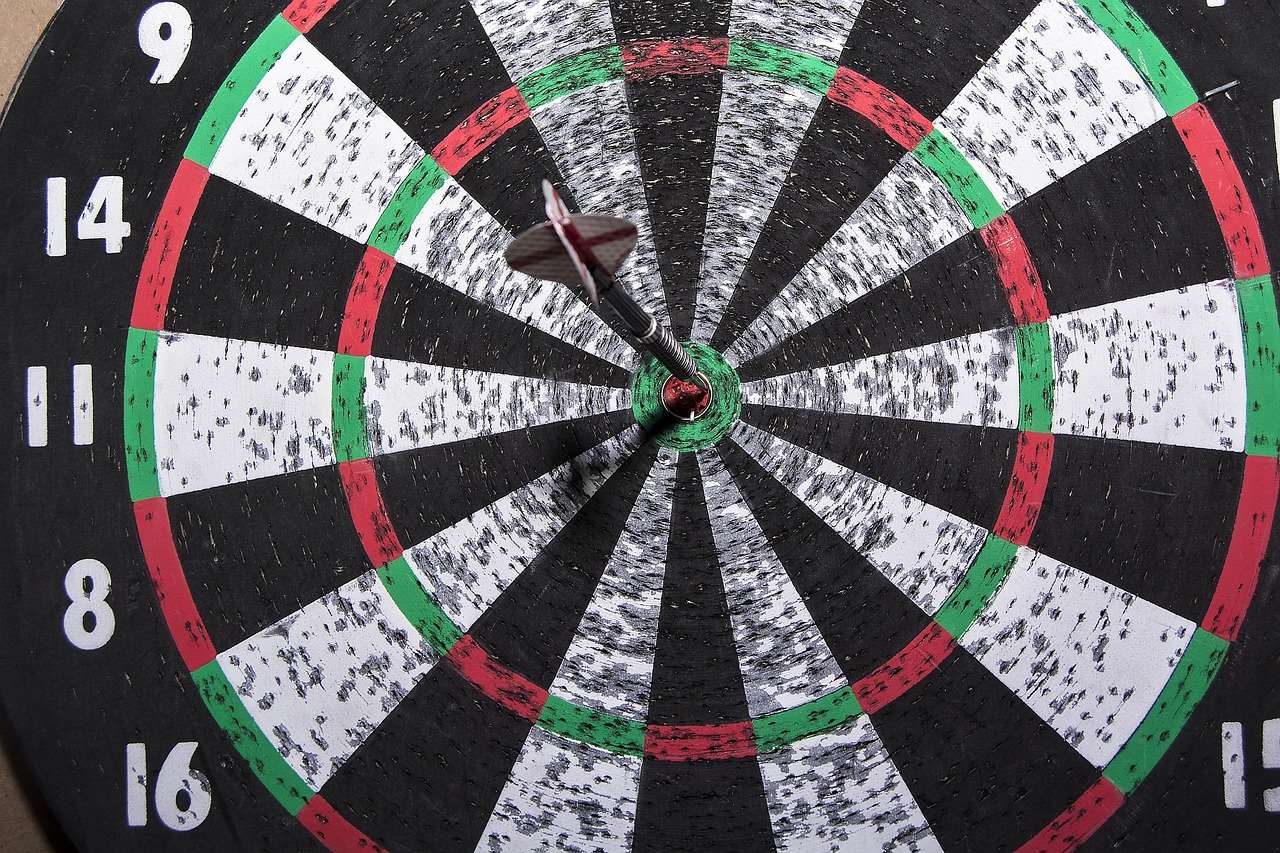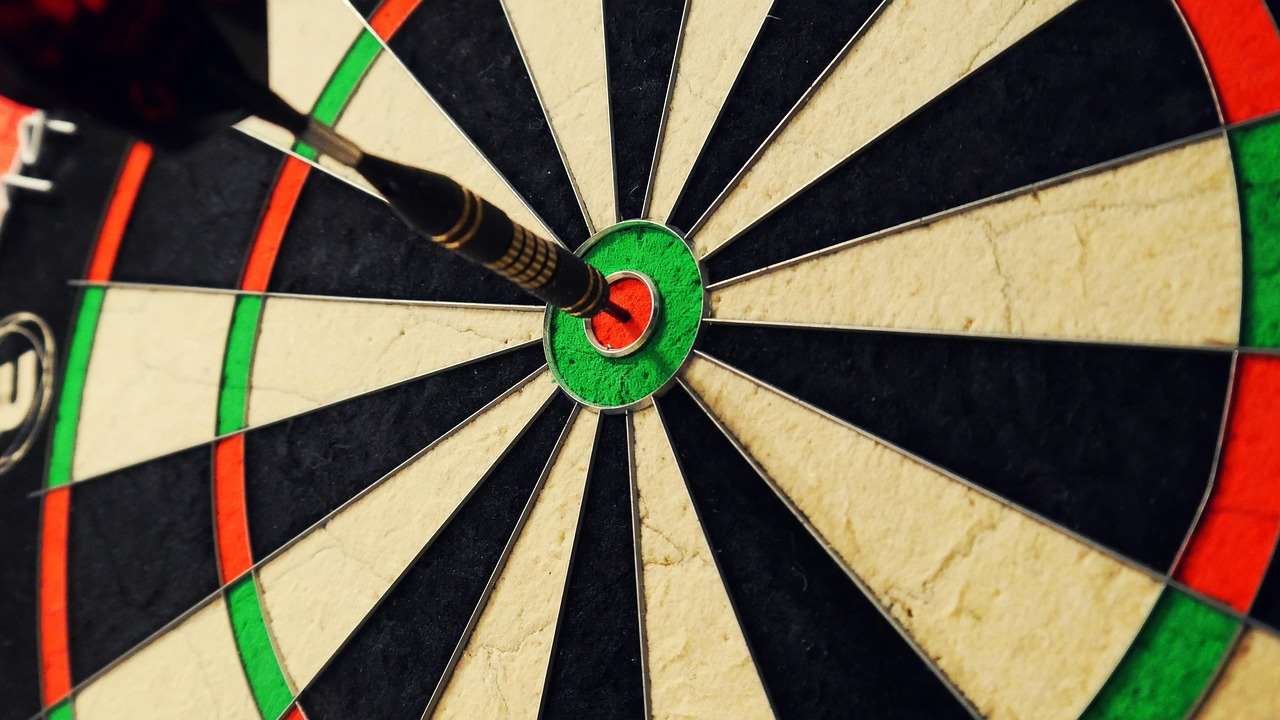Mastering Pub Darts Singles Play comes down to strategy, consistency, and mental fortitude, enabling you to dominate the oche. This article explores the key elements of successful singles darts, from fundamental techniques to advanced tactics, helping you improve your game and enjoy the thrill of victory in your local pub.
⚠️ Still Using Pen & Paper (or a Chalkboard)?! ⚠️
Step into the future! The Dart Counter App handles all the scoring, suggests checkouts, and tracks your stats automatically. It's easier than you think!
Try the Smart Dart Counter App FREE!Ready for an upgrade? Click above!
Elevating Your Pub Darts Singles Play Skills
Pub darts singles play is a captivating blend of skill, strategy, and mental toughness. It requires not just the ability to throw accurately, but also to think strategically and maintain composure under pressure. Understanding the nuances of the game and developing a well-rounded approach can significantly improve your chances of success.
This section delves into the fundamental aspects of enhancing your darts skills. We’ll explore everything from perfecting your stance and grip to mastering your throw and developing a consistent routine. We’ll also discuss the importance of practice and how to make the most of your training sessions.

Stance and Grip: The Foundation of Accuracy
Your stance and grip are the bedrock upon which your entire throw is built. Experiment to find a stance that feels comfortable and balanced, allowing you to maintain a stable base throughout your throw. Common stances include:
- Square Stance: Facing the board directly.
- Slightly Angled Stance: Placing one foot slightly ahead of the other.
- Side-On Stance: Positioning yourself perpendicular to the board.
Your grip should be firm but relaxed, allowing you to control the dart without tensing up. Avoid gripping the dart too tightly, as this can lead to inaccurate throws. Experiment with different grip positions to find what works best for your hand size and throwing style.
The Throw: Smoothness and Consistency
A smooth and consistent throw is essential for accuracy. Focus on using your arm as a pendulum, keeping your elbow stable and your wrist relaxed. Avoid snapping your wrist or using excessive force, as this can lead to erratic throws. Instead, concentrate on releasing the dart smoothly and consistently at the same point in your throwing motion.
Developing a Pre-Throw Routine
A consistent pre-throw routine can help you to focus and maintain composure under pressure. This routine should involve a series of specific actions that you perform before each throw, such as:
- Visualizing your target.
- Taking a deep breath.
- Performing a practice swing.
By repeating this routine before each throw, you can create a sense of familiarity and consistency, which can help you to stay calm and focused, especially during crucial moments in the game.
Strategic Game Play in Pub Darts Singles
Strategy plays a vital role in Pub Darts Singles Play. It’s not just about hitting the highest scores; it’s about understanding the game, knowing your opponent, and making smart decisions to maximize your chances of winning. Strategic dart throwing also involves targeting specific areas of the dartboard depending on the current score and the opponent’s potential moves.
This section will cover key strategic elements, including understanding the checkout chart, playing defensively, and capitalizing on your opponent’s weaknesses. We’ll also discuss the importance of adapting your strategy based on the specific game format and your opponent’s playing style.

The Checkout Chart: Your Road to Victory
The checkout chart is an essential tool for any serious darts player. It outlines the optimal combinations of scores needed to finish the game, allowing you to plan your throws strategically and maximize your chances of checking out quickly. Mastering the checkout chart involves memorizing common combinations and understanding how to adapt your strategy based on your current score.
For example, knowing that 170 (T20, T20, Bullseye) is the highest possible checkout and understanding common two-dart finishes like 81 (T17, D15) are crucial. Refer to Darts Culture And Community Guide to learn the etiquette and basic terminology of darts, helping your pub game.
Playing Defensively: Disrupting Your Opponent
Defensive play involves disrupting your opponent’s strategy and forcing them into uncomfortable situations. This can involve blocking key numbers, leaving awkward scores, or simply putting pressure on them to perform under duress. By playing defensively, you can gain a psychological edge and increase your chances of winning.
For example, if your opponent is close to a checkout, you might choose to target a number that blocks their preferred finishing route, forcing them to adjust their strategy and potentially make mistakes. Understanding the nuances of defensive play can significantly improve your overall game.
Capitalizing on Weaknesses
Observing your opponent’s playing style can reveal their weaknesses. Perhaps they struggle with doubles, or they tend to crack under pressure. Identifying these weaknesses allows you to tailor your strategy to exploit them, increasing your chances of victory in Pub Darts Singles Play.
If you notice that your opponent consistently misses the double 16, you might try to leave them on that number, knowing that they are more likely to miss and give you another opportunity to score. Adapting your strategy based on your opponent’s tendencies is a key element of successful singles play.
The Mental Game of Pub Darts Singles Play
Darts is as much a mental game as it is a physical one. Your mental attitude can have a significant impact on your performance, especially in high-pressure situations. Cultivating a positive mindset, managing your emotions, and maintaining focus are all essential for success in Pub Darts Singles Play.
This section explores the key aspects of the mental game, including developing a winning mindset, managing pressure, and staying focused. We’ll also discuss techniques for overcoming adversity and bouncing back from mistakes.

Developing a Winning Mindset
A winning mindset is characterized by confidence, optimism, and a belief in your ability to succeed. Cultivating this mindset involves focusing on your strengths, visualizing success, and maintaining a positive attitude, even when things are not going your way. Believing in yourself and your abilities is crucial for achieving your goals in darts.
Instead of dwelling on past mistakes, focus on learning from them and moving forward. Embrace challenges as opportunities to grow and improve, and maintain a positive outlook, even when faced with adversity.
Managing Pressure: Staying Calm Under Fire
Pressure is an inevitable part of darts, especially in singles play where the outcome rests solely on your shoulders. Learning to manage pressure and stay calm under fire is essential for maintaining your composure and performing at your best. Techniques for managing pressure include:
- Taking deep breaths.
- Focusing on your pre-throw routine.
- Visualizing success.
- Reminding yourself of your strengths.
By practicing these techniques regularly, you can develop the ability to stay calm and focused, even in the most stressful situations.
Staying Focused: Maintaining Concentration
Focus is crucial for accuracy and consistency in darts. Distractions, whether internal or external, can disrupt your concentration and lead to mistakes. Techniques for maintaining focus include:
- Minimizing distractions.
- Focusing on your target.
- Blocking out negative thoughts.
- Staying present in the moment.
By practicing these techniques, you can improve your ability to stay focused and maintain your concentration throughout the game. Remember to check Atmosphere At Live Darts Matches when you get chance to play in a more serious, high-pressure environment.
Practice and Improvement in Darts
Consistent practice is the cornerstone of improvement in darts. Regular training sessions allow you to refine your technique, develop your strategy, and build your mental toughness. However, not all practice is created equal. Effective practice involves setting goals, tracking your progress, and focusing on specific areas for improvement.
This section explores the key aspects of effective practice, including setting realistic goals, tracking your progress, and focusing on your weaknesses. We’ll also discuss the importance of varying your practice routine and incorporating different drills and exercises.

Setting Realistic Goals
Setting realistic goals is essential for staying motivated and making progress in darts. Your goals should be challenging but achievable, and they should be specific, measurable, attainable, relevant, and time-bound (SMART). For example, instead of setting a vague goal like “improve my average,” set a specific goal like “increase my average by 5 points within the next month.”
Tracking Your Progress
Tracking your progress is crucial for monitoring your improvement and identifying areas where you need to focus your efforts. Keep a record of your scores, your checkouts, and your overall performance in each practice session. This data will provide valuable insights into your strengths and weaknesses, allowing you to tailor your practice routine accordingly.
Consider using a dart scoring app or a notebook to track your progress. Analyze your data regularly to identify trends and patterns in your performance. This will help you to make informed decisions about your training and optimize your progress.
Focusing on Weaknesses
Identify your weaknesses and dedicate specific practice sessions to addressing them. If you struggle with doubles, spend extra time practicing your double shots. If you have trouble with certain checkouts, focus on memorizing the combinations and practicing those specific finishes. By targeting your weaknesses, you can become a more well-rounded and consistent player.
Don’t be afraid to ask for help from more experienced players or coaches. They can provide valuable feedback and guidance on how to improve your technique and strategy. Remember that improvement takes time and effort, so be patient with yourself and celebrate your progress along the way.
Darts Equipment Choices and Setup
The right equipment can significantly impact your performance in darts. Choosing darts that suit your grip and throwing style, and setting up your dartboard correctly are essential for maximizing your accuracy and consistency. Pub Darts Singles Play becomes more enjoyable with the correct equipment.
This section explores the key aspects of choosing darts and setting up your dartboard, including understanding the different types of darts, finding the right weight and balance, and ensuring that your dartboard is properly mounted and illuminated.

Choosing the Right Darts
Darts come in a variety of shapes, weights, and materials. Experiment with different types of darts to find what feels most comfortable and suits your throwing style. Consider the following factors when choosing darts:
- Weight: Lighter darts are generally easier to control, while heavier darts may offer more stability.
- Barrel Shape: Different barrel shapes can affect your grip and release.
- Material: Brass darts are typically more affordable, while tungsten darts are denser and more durable.
It’s also worth considering the flights and shafts, as these can affect the dart’s aerodynamics and trajectory. Experiment with different combinations to find what works best for you. And remember, you can read more on Getting Tickets For Darts Events to enhance your darts experience.
Dartboard Setup: Ensuring Accuracy
Proper dartboard setup is crucial for ensuring accuracy and fairness. The dartboard should be mounted so that the center of the bullseye is 5 feet 8 inches (1.73 meters) from the floor. The oche, or throwing line, should be 7 feet 9.25 inches (2.37 meters) from the face of the dartboard.
Ensure that the dartboard is securely mounted and that it is properly illuminated. Use a level to ensure that the dartboard is perfectly vertical. A well-lit and properly mounted dartboard will help you to see your target clearly and throw accurately.
Conclusion
Mastering Pub Darts Singles Play is a journey that requires dedication, practice, and a strategic mindset. By focusing on perfecting your technique, developing a strategic approach, and cultivating a winning mental attitude, you can significantly improve your game and enjoy the thrill of victory. Remember that consistency, focus, and adaptability are key to success.
Continue to practice regularly, analyze your performance, and seek feedback from other players. With hard work and dedication, you can achieve your goals and become a formidable force on the oche. Now, grab your darts and put these strategies into practice! Good luck, and happy darting!
Hi, I’m Dieter, and I created Dartcounter (Dartcounterapp.com). My motivation wasn’t being a darts expert – quite the opposite! When I first started playing, I loved the game but found keeping accurate scores and tracking stats difficult and distracting.
I figured I couldn’t be the only one struggling with this. So, I decided to build a solution: an easy-to-use application that everyone, no matter their experience level, could use to manage scoring effortlessly.
My goal for Dartcounter was simple: let the app handle the numbers – the scoring, the averages, the stats, even checkout suggestions – so players could focus purely on their throw and enjoying the game. It began as a way to solve my own beginner’s problem, and I’m thrilled it has grown into a helpful tool for the wider darts community.